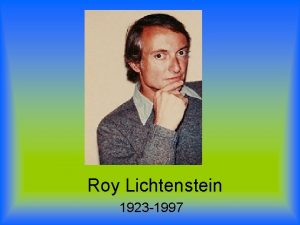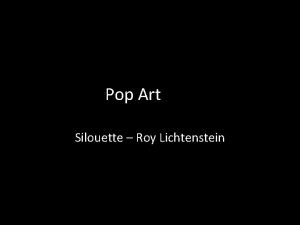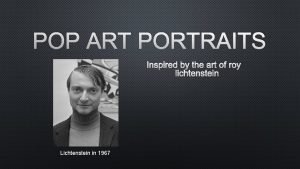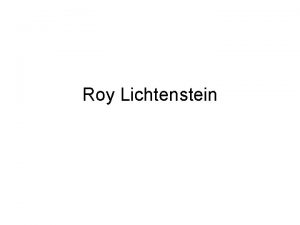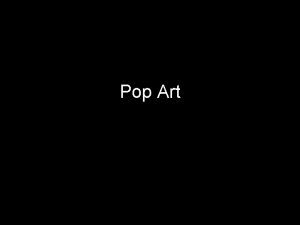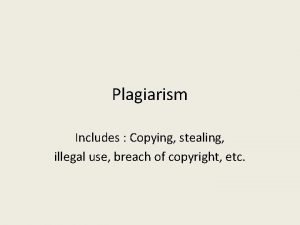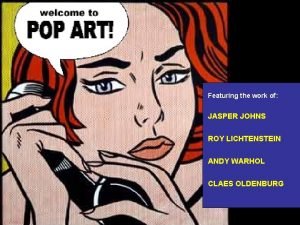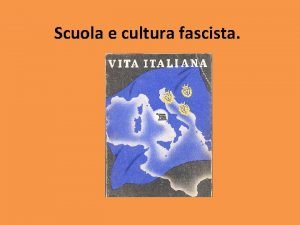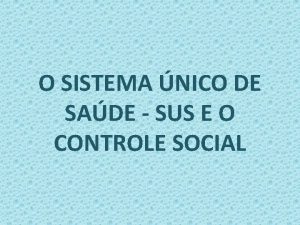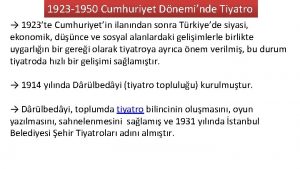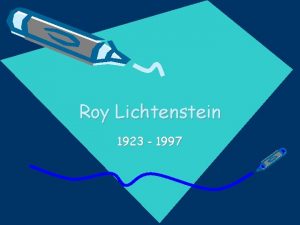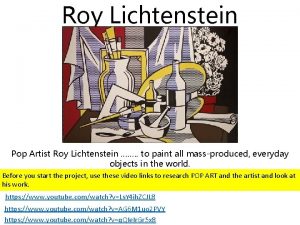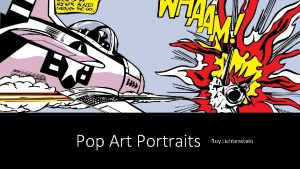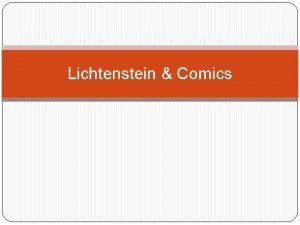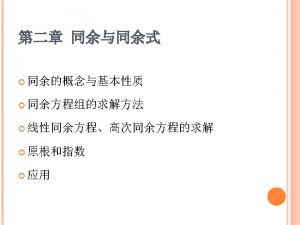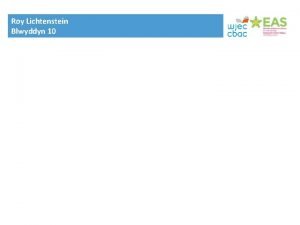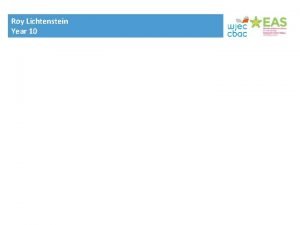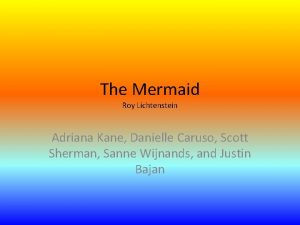Roy Lichtenstein 1923 1997 How many of you
















- Slides: 16

Roy Lichtenstein 1923 -1997

How many of you would consider this art? Do you think this belongs in a museum?

Roy Lichtenstein was born October 27, 1923, in New York City From 1957 to 1960, Lichtenstein obtained a teaching position at the State University of New York, Oswego. Like many other artists he worked in the commercial graphic business for a while - making designs and decorating shop windows.

Lichtenstein's first well known piece goes back to 1956, when he created the famous Ten Dollar Bill print

Then followed a three year period of abstract painting. "Abstract expressionism" was the dominating art movement at that time. Lichtenstein was then in his late thirties and an unknown artist.

• The drastic change in Lichtenstein's career came with his first painting in the style of a comic strip. • It was a painting of Mickey Mouse and Donald Duck, called “Hey Mickey”. • The story goes, that he painted it for his kids who had provoked him by saying that "daddy could not paint as well as the images in the comic books".

These are some of Lichtenstein’s first works. What is the same in all of these paintings. Why do you think he used only these 3 colors?

Lichtenstein worked a lot with stencils, producing rows of oversized ben-day dots, that make his paintings look machine made. He did not want his brush strokes to be seen. He used what he called “The Mechanical Hand”

Most of Lichtenstein’s later works look like this…. What similarities do you see in these pieces?

He then added something else to his emotional pieces… Thought & Word Bubbles!

He also made a series of still life paintings. Using ben-day dots and stripes he made his still lives truly unique and Pop Art like.

• His later works seem to reflect the Cubist style. Whose work does this remind you of?

Pablo Picasso Lichtenstein Picasso What are some similarities between these two pieces?

And even a Surreal style. Lichtenstein Salvador Dali What are some similarities between these two pieces?

Without dots With dots In the late 1980 s and early 1990 s he returned to the use of Ben-Day dots in a new and refined application of his earlier style.

Roy Lichtenstein is seen as the second most influential Pop Artist next to Andy Warhol. Roy Lichtenstein died September 30, 1997.
 Roy lichtenstein (1923-1997)
Roy lichtenstein (1923-1997) Dead nature drawings
Dead nature drawings Roy lichtenstein biographie
Roy lichtenstein biographie Pop art self portrait
Pop art self portrait When was roy lichtenstein born
When was roy lichtenstein born Peter brant art
Peter brant art Roy lichtenstein
Roy lichtenstein Illustrator pop art dots
Illustrator pop art dots Ready mades
Ready mades Jasper johns
Jasper johns Ghostbusters plagiarism
Ghostbusters plagiarism Riforma gentile 1923
Riforma gentile 1923 Lei eloy chaves 1923
Lei eloy chaves 1923 Auto dealer compliance training
Auto dealer compliance training Ruhrkampf 1923 verlauf
Ruhrkampf 1923 verlauf John venn (1834-1923)
John venn (1834-1923) Cumhuriyet dönemi'nde tiyatro 1923 1950
Cumhuriyet dönemi'nde tiyatro 1923 1950
